
Some countries are packed with immense natural beauty or historical significance that’s rivaled only by their inaccessibility to Western travelers. Think Syria, think Sudan, think Afghanistan—places where the most frequent images we see in the media are of soldiers, armed vehicles, explosions, and the rubble in their aftermath.
What you don’t often see is the natural and cultural grandeur that would otherwise land these places squarely at the top of many people’s bucket lists. Here are 10 such countries that, for their sake and for those of travelers the world over, we hope will find peace in our lifetime. But as for right now? Probably not a good idea to visit.
Image Gallery

Afghanistan
The original hippie trail, also called the overland, wound its way from Europe to South Asia through Afghanistan and the Khyber Pass onward via Pakistan toward Nepal. Only a generation ago—in the 1970s—travelers affiliated with the subculture trekked along the Hindu Kush mountain range, warmly welcomed by local Afghans.
In the foothills, not far from Bamiyan where the Taliban destroyed the world's tallest Buddha statues, are six sapphire-colored lakes that make up Band-E-Amir, the country's first national park (Wakhan is the country's second such park, a mountainous region home to brown bears, wolves, and snow leopards.) Kabul's hotels were places to linger, given the high value of the dollar and numerous museums, bazaars, and historical sites. And, of course, recreational drug users had found their mecca.
Along with its natural beauty, Afghanistan is filled with ancient history. In the north, the blue-domed Shrine of Hazrat Ali in Mazar-e Sharif, famous for its doves, is a pilgrimage site for Muslims coming to pay respects to the tomb (non-Muslims are not allowed to enter). To the west sit the ruins of Balkh. Settlers lived here as early as 500 B.C.E., and miles of ancient wall and building remains from its Buddhist era still survive.
Other sites of cultural significance include the minaret and archeological remains of Jam and the cultural landscape and archeological remains of the Bamiyan Valley, both on UNESCO's List of World Heritage in Danger.
RELATED: 10 World Heritage Sites to See Before They're Gone Forever

Afghanistan
The original hippie trail, also called the overland, wound its way from Europe to South Asia through Afghanistan and the Khyber Pass onward via Pakistan toward Nepal. Only a generation ago—in the 1970s—travelers affiliated with the subculture trekked along the Hindu Kush mountain range, warmly welcomed by local Afghans.
In the foothills, not far from Bamiyan where the Taliban destroyed the world's tallest Buddha statues, are six sapphire-colored lakes that make up Band-E-Amir, the country's first national park (Wakhan is the country's second such park, a mountainous region home to brown bears, wolves, and snow leopards.) Kabul's hotels were places to linger, given the high value of the dollar and numerous museums, bazaars, and historical sites. And, of course, recreational drug users had found their mecca.
Along with its natural beauty, Afghanistan is filled with ancient history. In the north, the blue-domed Shrine of Hazrat Ali in Mazar-e Sharif, famous for its doves, is a pilgrimage site for Muslims coming to pay respects to the tomb (non-Muslims are not allowed to enter). To the west sit the ruins of Balkh. Settlers lived here as early as 500 B.C.E., and miles of ancient wall and building remains from its Buddhist era still survive.
Other sites of cultural significance include the minaret and archeological remains of Jam and the cultural landscape and archeological remains of the Bamiyan Valley, both on UNESCO's List of World Heritage in Danger.
RELATED: 10 World Heritage Sites to See Before They're Gone Forever
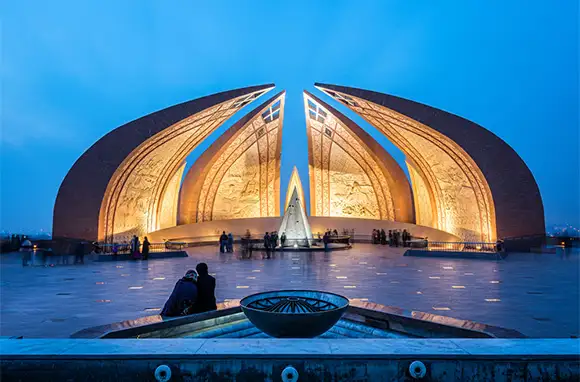
Pakistan
In many places within Pakistan, foreigners are required to travel with an armed escort. Despite this, some find its snow-capped summits, including K2 (the world's second highest mountain) and historical sites (like the Mughal-era fort and Shalamar gardens in Lahore), irresistible. Easier mountaineering access to the peaks, glaciers, and lakes in northern Pakistan was made possible with the construction of the Karakoram Highway that follows a branch of the ancient Silk Road. Ultimately connecting Islamabad with China via the Khunjerab Pass in the Karakoram range, the road is lined with thousands of petroglyphs, including some that are believed to date between 5000 B.C.E. and 1000 B.C.E.
Alongside UNESCO World Heritage sites that include ancient ruins showing the breadth of the Pakistan's past are more modern constructions like the Shah Faisal Mosque in Islamabad. Of course, bazaars like the Smugglers Bazaar by the Kyber Pass near Peshawar hint at continued troubles, with guns being sold alongside opium. The country has also moved to protect several areas of natural beauty like Hingol National Park, home to leopards and gazelles, among other wildlife. To the east of the former capital city of Karachi are wildlife sanctuaries like Marho Kotri, though the country's coastline is often off limits to foreigners.
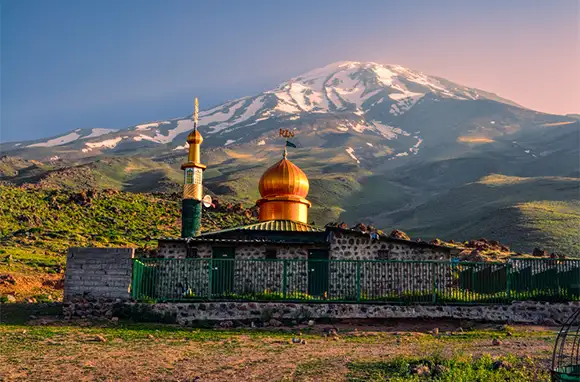
Iran
The landscape is varied with desert oases at one end of the spectrum and ski resorts in the Alborz mountains on the other. A whopping 19 UNESCO World Heritage sites are spread throughout the country and include Persepolis, the ancient capital of the Achaemenid Empire; the Golestan Palace in Tehran; and the Tabriz Historic Bazaar Complex. The minarets and turquoise-tiled domes that dot Naqsh-e Jahan Square help make Isfahan a major tourist destination. And in Yazd, known for its silks, you can see one of the largest cities built almost entirely out of adobe.
Kish Island, located in the Persian Gulf, is one way to visit Iran, albeit without really experiencing the true Iran. A 14-day visa is available on entry, but doesn't apply to the mainland. Americans in Iran must be accompanied, either with a private guide or on a tour, making it a bit of a challenge to travel as freely as you'd like, but it doesn't stop hundreds of U.S. citizens from visiting the country each year.
Yes, women need to wear a headscarf in public at all times, but ask Americans that have been to Iran and you'll hear about how welcomed they felt by Iranians; the anti-American political rhetoric being just that—rhetoric. However, if anything were to happen on your visit to Iran, you'd need to rely on the Swiss embassy for help, as the U.S. has no official diplomatic presence in the country.

Sudan
While the Republic of South Sudan faces constant armed conflict outside its capital Juba, making it hard for the U.S. Embassy to reach citizens during emergencies, the United States Department of State also strongly advises against travel to Sudan, too.
Though Egypt is always talked about for its pyramids, Sudan actually has more pyramids in one chunk of its northern desert than in all of Egypt, which makes sense given the area was once part of Ancient Egypt. The archeological sites in Sudan are several hundred years older than those in its northern neighbor, but the ones found in the Napatan Region, considered part of Nubia, still date back to 900 B.C.E.
In addition to the nearly 200 Nubian pyramids, the area along the Nile has tombs, temples, palaces, and Gebel Barkal, a mountain considered sacred to the ancient Egyptians. Further south down river are additional ruins, including the ancient city of Meroe that preserves settlements, a cemetery, pyramids, and more from the Kingdom of Kush. In other areas of the country, such as Radom National Park, poaching threatens the wildlife of the country's savannahs and forests.

Syria
From the ancient Roman ruins at Palmyra and Apamea to the ancient cities of Aleppo, Bosra, and Damascus, significant Syrian cultural sites are in grave danger of being demolished forever, given the current internal upheaval. All of the country's UNESCO sites are on the List of World Heritage in Danger.
Many of Syria's cities are believed to be some of the oldest continuously inhabited places on earth and showcase a range of architecture from across centuries, including mosques, palaces, and hammams. Roman theaters mingle among Byzantine-era Christian churches, which sit beside mosques. The country is home to one of the oldest monasteries, Saidnaya Monestary, and beach resorts near areas like Tartous and Lattakia on the Mediterranean attracted families for a sea vacation not that long ago.
Ancient villages in northern Syria have been illegally excavated and used as shelter by those fleeing violence. The looting of archeological sites, the destruction of Palmyra's temples of Baalshamin and Bel, and the devastation to Crusade-era castles like Crac des Chevaliers and Qal'at Salah El-Din is shocking given so many of the country's cultural sites were so well preserved for centuries.
RELATED: 10 Best Ruins in the World
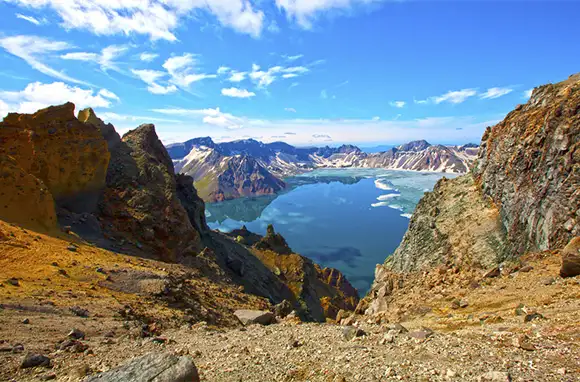
North Korea
It is possible to visit North Korea, but as with Iran you'll be accompanied at all times—in this case by two government-employed guides. Of course the cornerstones of true travel experiences—talking to locals, wandering off the beaten path—are impossible when you're seeing what the government wants you to see. And any traveler runs the risk of arbitrary arrest and detention, even if you have a visa.
Like in Iran, the U.S. doesn't operate an embassy in North Korea, and you'll have to rely on the Swedish embassy. For a less harrowing experience, visiting the DMZ from South Korea affords a glimpse into the north, in particular from the Yeolsoe Observation Deck. In addition to views of the northern country, there are exhibits offering a glimpse into daily life.
But for those who can't resist the off-limits feel of North Korea, you may be able to visit some of the country's natural wonders, like Mount Baekdu (or Paektu, depending on the translation) straddling the border with China (Changbai Mountain). The active volcano has a crater lake and affords magnificent views. There are also caves near Mount Myohyang and beaches and the famed Kuryong Waterfall near Mounta Kumgang. For the more active traveler, it's possible to hit the slopes at Masik Pass Ski Resort. Or you could also opt to run in the Pyongyang Marathon. It's unclear whether your government escorts will have to keep up with you.

Mali
Architecture in Mali seems to defy physics: The structures looking like larger-than-life sand sculptures that may blow over with a strong gust. But the structural integrity is impressive, and since Paleolithic times, humans have settled in Mali's Land of the Dogons due to its natural protection from high plateaus and cliff faces. Of course, seeing the geological and cultural importance of this area increases tourism, threatening the heritage, while climate change is also forcing many villages to relocate to the plains.
In Djenne, inhabited since 250 B.C.E., nearly 2,000 traditional houses showcase Islamic architecture in sub-Saharan Africa, while archeological remains showcase the history of extinct, pre-Islamic civilizations. In the western part of the country, Boucle du Baoule National Park protects prehistoric rock art, while in the south Bafing National Park protects chimpanzees.
At risk from fighting in the country are the city of Timbuktu and the thousands of ancient manuscripts it contains; and the Tomb of Askia, which also faces concerns of artifact looting.
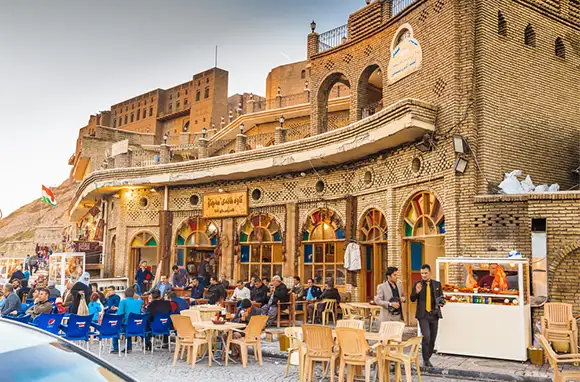
Iraq
It may prove difficult to get a visa to Iraq, though 15-day visas to the Kurdistan Region—considered safe by some because attacks occur less frequently—are available to visitors on arrival. And once in Iraq, it's important to stay clear of borders with countries like Iran. Not only are minefields still present, but hikers too close to the Iranian border were detained for an extensive period in 2009.
For now, the high risk of kidnapping probably isn't worth the visit, though the country's historical sites—the ancient remains of Bablyon; Baghdad's modern, larger-than-life Al-Shaheed monument; and the swords of Qadishiyah—have a strong lure. Its natural landscape—mountains and lakes in Kurdistan, snow-capped Zagros mountains, waterfalls, and gorges—complicates the image of this country as being nothing more than a dust-covered battlefield.
ISIS has used the ancient city of Hatra, which withstood Roman invasions, as an ammo dump and has since destroyed many of the cultural artifacts it contained. The extent of damage to ancient cities like Nimrud Khorsabad is uncertain. The group has used various means to demolish Mar Behnam Monastery (which was built in the 4th century and survived the Mongols), Mosque of the Prophet Yunus, and the medieval Islamic masterpiece, Imam Dur Mausoleum. Samarra, an ancient city preserving some of the largest mosques and palaces in the Islamic world; and Ashur, which dates back to the third century B.C.E., are also threatened.
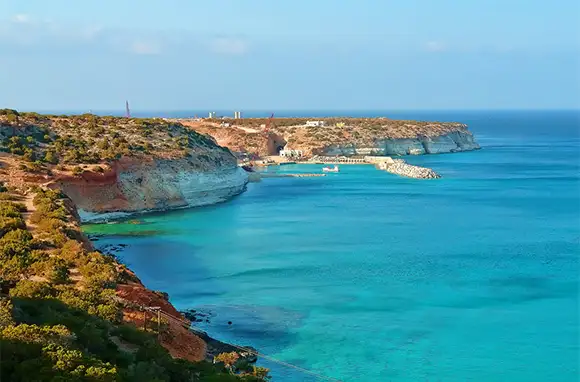
Libya
Libya's capital, Tripoli, shows how the country is an amalgamation of cultures: Influences from Greek, Roman, Turkish, and Italian architecture abound, while churches and mosques sit side by side. Many archeological sites line the Mediterranean, including Cyrene, built by the Greeks in the fourth century B.C.E.; Leptis Magna, a jewel of the Roman Empire with a well-preserved theater; and Sabratha, built by the Phoenicians.
But nothing gets as close to the Mediterranean as Farwa Peninsula, a stretch of sand and palms that remains relatively quiet. Also on the coast is El-Kouf National Park, which includes dunes, lagoons, and cliffs home to various species of flora and fauna (everything from flamingos to hyenas live there).
The interior of the country is spoiled with riches, too. The incomprehensible swaths of sand and palm-lined oases like the town of Ghadames in the Sahara are something out of a desert dream. Also deep in the desert is Waw an-Namus, an extinct and otherworldly volcanic crater. And on the border with Algeria is Tadrat Aracus, a prehistoric rock art site with thousands of paintings dating back to 12000 B.C.E.

Democratic Republic of the Congo
It's hard not to think about this sprawling chunk of land in the middle of Africa without thinking about gorillas—and poachers. But all of its UNESCO-designated sites—four national parks and one wildlife reserve—are at risk of destruction due to the impact of civil conflicts.
One of the most popular parks, Parc National des Virunga, is visited by people looking to track gorillas (of the 880 mountain gorillas left, the park is home to 25 percent) or climb the active Nyiagongo Volcano, though it's often closed to visitors due to rebel groups. The park's diversity is unparalleled with savannahs, marshlands, forests, and even glaciers in the Rwenzori mountains at the border with Uganda. South of Virunga is Kahuzi Biega National Park, home to some of the last eastern lowland gorillas and two extinct volcanoes made for hiking. On nearby Lake Kivu, Idjwi Island attracts bird watchers.
In the west is Africa's largest tropical rainforest reserve, Salonga National Park. The Congo River snakes through it and the only way to access it is via water. Closer to the Republic of Congo border is Lola ya Bonobo Sanctuary, a 75-acre tropical forest home for bonobos—a more peaceful version of a chimpanzee.
More from SmarterTravel:
- 10 Taboo Tourist Destinations (and How to Visit Them)
- 10 Safety Mistakes Women Shouldn't Make When Traveling Alone
- 10 Hidden Islands You've Never Heard Of
Follow Kate Sitarz's nomadic life on Instagram @katesitarz and Twitter @katesitarz.
We hand-pick everything we recommend and select items through testing and reviews. Some products are sent to us free of charge with no incentive to offer a favorable review. We offer our unbiased opinions and do not accept compensation to review products. All items are in stock and prices are accurate at the time of publication. If you buy something through our links, we may earn a commission.
Related
Top Fares From
Today's Top Travel Deals
Brought to you by ShermansTravel
Greece: 9-Night Vacation, Incl. Meteora &...
Exoticca
 vacation
$2099+
vacation
$2099+
New Year Sale: Luxe, 9-Nt Alaska...
Oceania Cruises
 cruise
$3599+
cruise
$3599+
Ohio: Daily Car Rentals from Cincinnati
85OFF.com
 Car Rental
$19+
Car Rental
$19+



